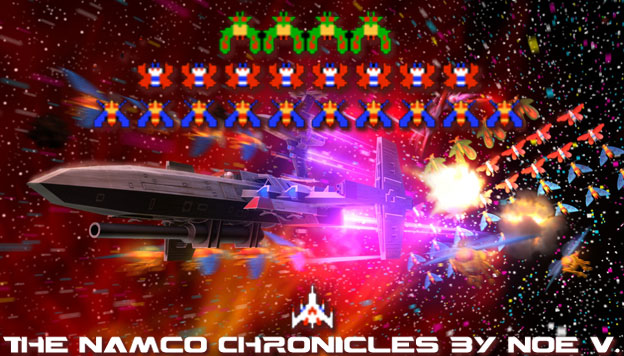
I had mentioned groundbreaking titles like Space Invaders, Asteroids and Galaga previously. Even the Star Wars and Star Trek arcade games were featured on the blog. The ‘80s were a chance for the developers to experiment with the space shooter genre. Every new release was a chance to rewrite the history books. From the humble sprite up to the very first vector and polygon titles, the space shooter was a pioneering format for the industry. Despite all of the advancements that Atari, Namco, Sega, Taito and a dozen other developers had introduced with space combat there was something missing. Audiences did not know how much more of an impact gaming could have on culture until it crossed paths with Hollywood. Let us set aside the 1982 film Tron for just a moment. The definitive videogame movie for a generation may have been The Last Starfighter. Released in 1984 the film revolved around a fictional arcade game called Starfighter. A young player named Alex Rogan, who felt like he didn’t have anything going for him, became a local hero when he mastered the game. In doing so he ended up being recruited to fight in an intergalactic war. It turned out that the game was actually a training simulator. By beating it Alex had proven he was ready to become a gunner aboard an actual space ship.
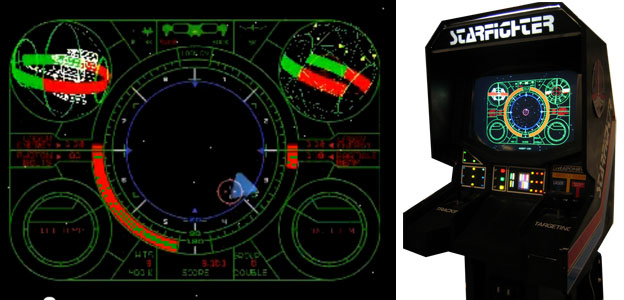
Audiences went wild for the film. The premise mixed fantasy and science fiction in equal measure. The adventure did not have to happen “a long time ago, in a galaxy far, far away.” It happened today and only took a videogame to unlock the journey. You can imagine how much this premise sparked the imagination of millions of kids all around the world. The computer generated effects for the film were amazing. When they were combined with practical effects, sets, models and realistic alien makeup then it was easy for audiences to get swept up in the world. Sadly no videogame looked as good as Starfighter did in the film.
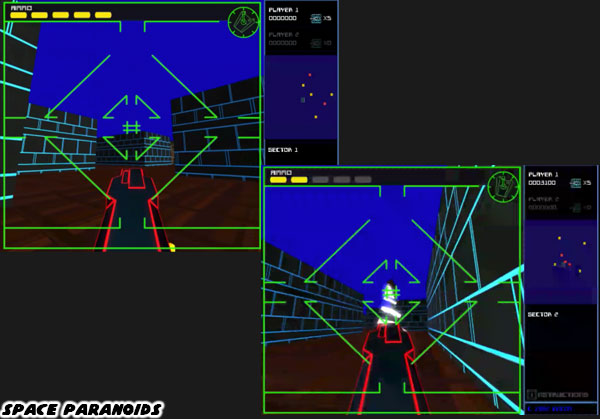
The same thing could be said of Space Paranoids in the feature Tron. Games in the ‘80s were very much locked into sprite-based technology and the polygon engines would not take over for another decade. Everything changed in 1991 when Namco released a title called Starblade. The game
was as close to a space combat simulator as had ever been created. Unlike Solvalou the studio did not want to retrace the ground that they had covered with any previous title. They looked at the science fiction genre as a whole to see what should be incorporated from a design and storytelling perspective. The developers at Namco were not only aware of domestic films and animation but also every major science fiction movie from the west. They figured out how to assemble a game around those themes.
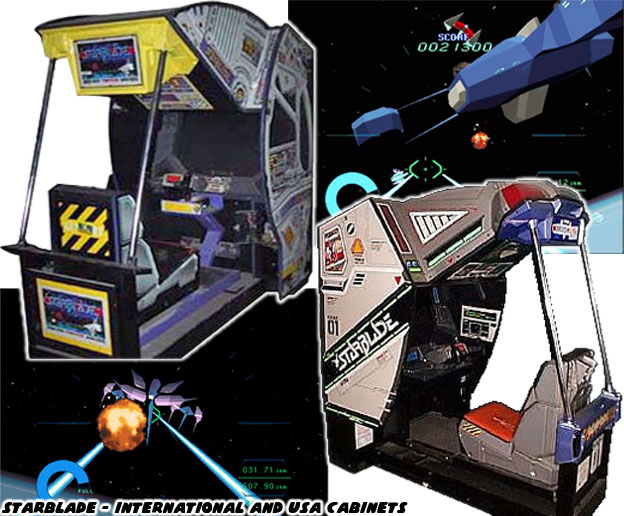
Starblade incorporated the visuals and ideas from the Last Starfighter with just a hint of contemporary anime and manga influences. The polygon ships and environments featured were as close as anyone had come to recreating the movie effects. The game also included scenarios that were reminiscent of Star Wars, including a raid on a spherical base called the Red Eye, instead of the Death Star. Starblade also preserved the SHMUP tradition of featuring a “boss battle” at the end of the main adventure. To help place players into the moment the game made very minimal use of music cues, reserving them for pivotal moments in the adventure.
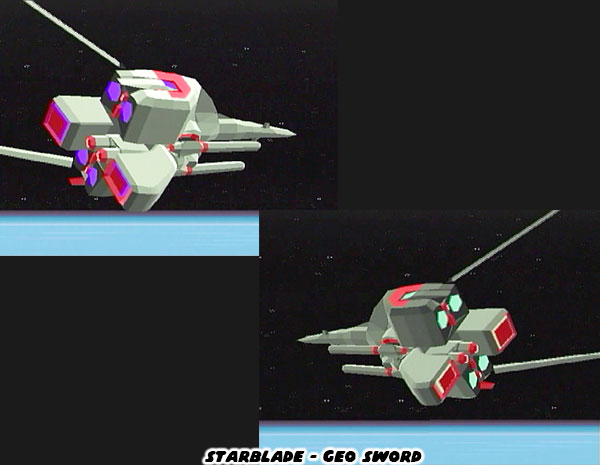
The majority of the experience featured the sounds of the spaceship, the GeoSword, shooting and the concussive blast of massive opponents exploding accented by moments of dead silence. Sound could not carry in space after all and the designers used the silence as a way to heighten the tension of the game. From time to time headquarters would radio in a mission update. The pilot of the GeoSword was also the only other voice that the player would hear from. For the almost 20 minutes worth of nonstop gameplay there wasn't more than a few lines spoken. By comparison Project Sylpheed had far more dialogue in the opening cinema than Starblade had in the entire 20-minute adventure. It was a stark contrast to the catchy tunes that the Namco Sound Team was known for. It felt like a daunting simulator which Alex Rogan would have been proud to complete. For a long-time arcade visitor the game was nothing short of perfection.
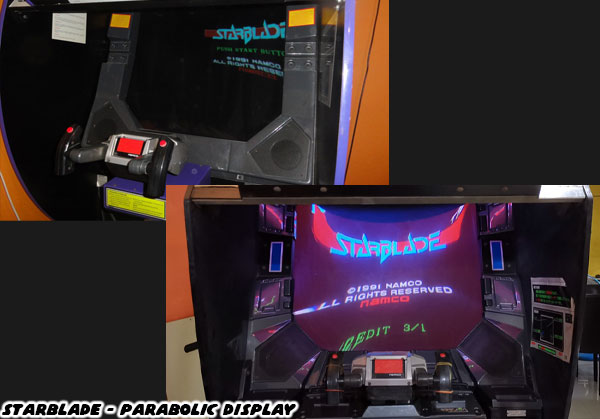
The studio wanted to add a sense of depth to the title, almost a 3D effect but without using glasses. They incorporated that into the layout of the deluxe sit down cabinet. The CRT monitor was actually suspended above the head of the player, hidden in the frame. The picture was reflected off of a shiny, concave black plastic surface. The curved screen added a larger viewable surface than a traditional display. It wasn’t the first time that an arcade developer used a reflection for the game screen. Many of the early arcade cabinets reflected off of mirrors to increase the viewable size of the CRT displays. The curved surface that Namco used however was a first. The studio also
used surround sound in the title, hiding speakers around the player. During a heated encounter you could actually hear the sound of enemy ships trying to flank you from the sides, the radio of the pilot from above you and even the rumble of the engines from below as you danced through tight situations. Sitting in the cabinet, holding onto the actual controls and watching the game unfold before you was an experience that no console port could ever capture. That didn't stop Namco from trying however. The title was released for the Playstation as well as the 3DO console.
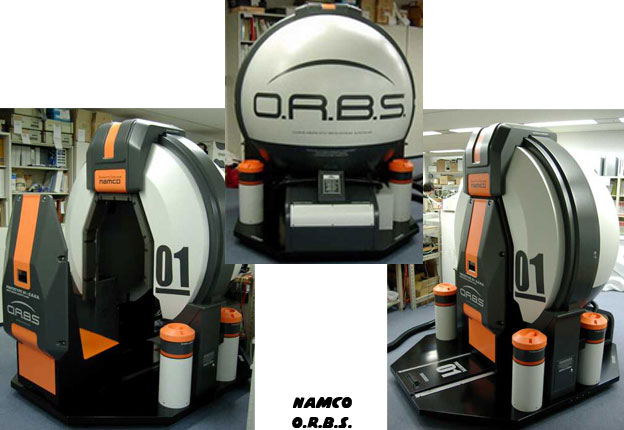
Sadly the game was rarely seen in the arcade. Starblade was only available in the sit down format and the cabinet was expensive. Arcade owners were already leery about their budget and the constantly shifting trends of their audience. They had to predict what game would be hot and stay in circulation for a long time, even more so when the consoles began to syphon away players. The owners were also critical about the space they needed for certain games and the maintenance required for larger setups. Despite all of these things fans never forgot the title and neither did the designers at NAMCO. In 2001 the company wanted to unveil some new hardware for the arcade. Gamers would sit a chair and slide into a dome that was projected onto. They would also be encapsulated by an array of speakers. The likes of this immersive cabinet had never been seen before. The system was called O.R.B.S. - Over Reality Booster System.
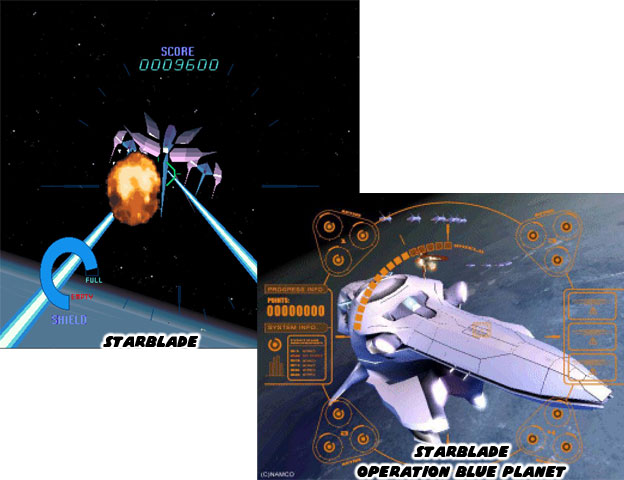
The studio had only one game in mind that would highlight the revolutionary cabinet.
Starblade Operation Blue Planet recreated the sense of scale that the first game presented but with improved visuals and audio. The opening and pacing on the battles was very reminiscent of the original arcade title. Operations was in constant contact with the player and sent them updated mission statements every few moments. There was still a good use of silence to help sell the simulation experience. The ships had evolved somewhat since the original game. Players were now serving as gunners aboard the GeoCalibur, a ship with twice the firepower of the original GeoSword. The opposing ships also looked more powerful, including the heavily shielded "Commander."
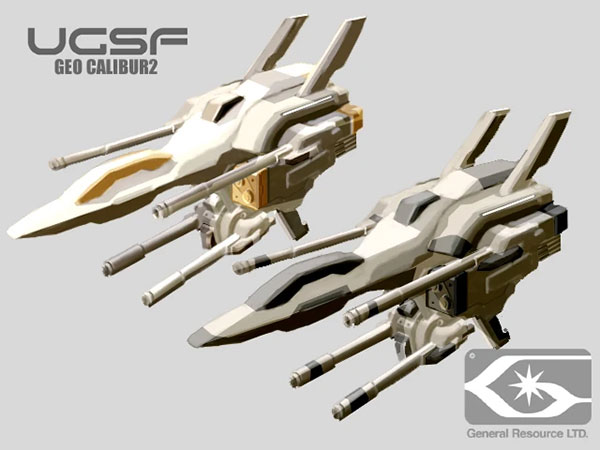
Operation Blue Panet saw limited beta testing in several Namco arcades through Japan and never got a full release. The footage that the company posted on YouTube was the only way for the world to get a glimpse as to what might have been. It was a shame really. The studio would develop a variation of O.R.B.S. and use it for the Gundam giant robot series in arcades. It only made sense from a business perspective. The studio had to use a high-profile IP like Gundam to bring gamers in. The deluxe arcade cabinets had to offer something unique in order to command the $5 or more per play.
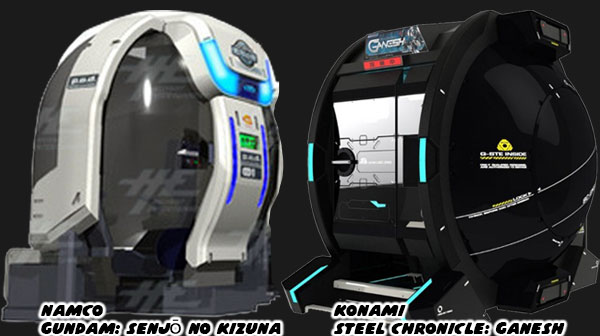
Namco was not the only company that found success with these high tech immersive cabinets. The Steel Chronicle: Ganesh cabinet by Konami debuted in the 2014 Japan Amusement Expo. It was absolutely amazing. Players
controlled a robot with joysticks and foot pedals and the cabinet even featured a touch pad with which to select weapons. The Steel Chronicle series could best be described as an Earth Defense Force meets Monster Hunter for the arcade. This cabinet was another evolutionary step for the industry but its inspiration could be traced back to Starblade.
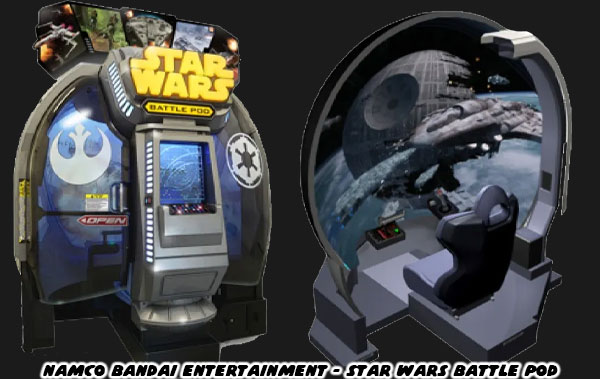
In 2014 Namco Bandai Entertainment used the O.R.B.S. platform to unveil one of the most immersive Star Wars games ever made. Star Wars Battle Pod. A more traditional sit down arcade version was also offered to vendors. Sega and Namco had actually been trading punches over who made the most immersive arcade experience for over 20 years. Each studio tried to top the other by offering great gameplay wrapped in a wild cabinet. The boldest ideas from each studio would make the O.R.B.S. system seem tame by comparison. Interestingly enough science fiction was the genre that lent itself to these experiences. The next blog will look at these revolutionary titles.
As always if you would like to sponsor me
please visit my Patreon page and consider donating each month, even as little as $1 would help make better blogs and even podcasts!






















No comments:
Post a Comment